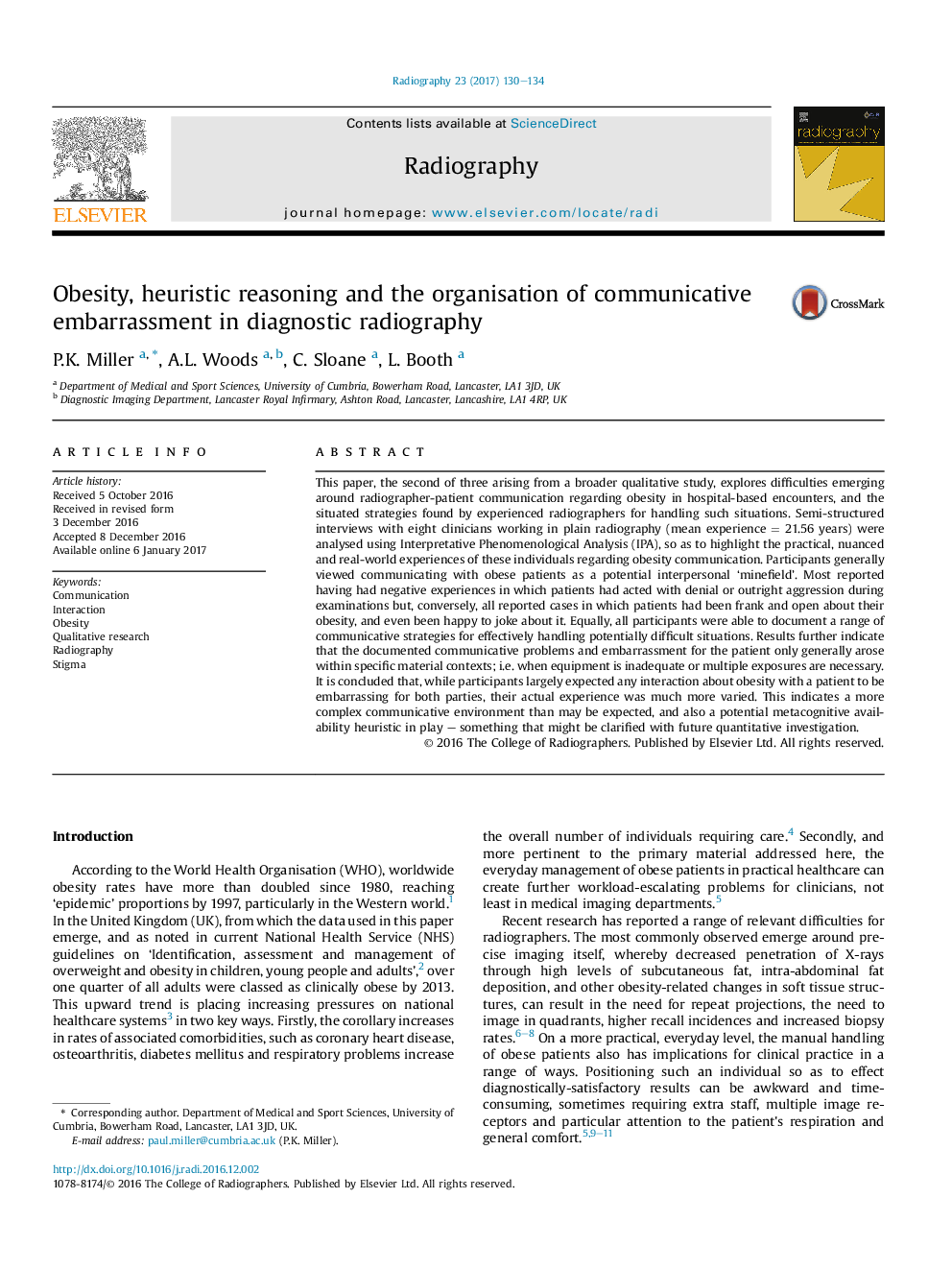| Article ID | Journal | Published Year | Pages | File Type |
|---|---|---|---|---|
| 5579372 | Radiography | 2017 | 5 Pages |
Abstract
This paper, the second of three arising from a broader qualitative study, explores difficulties emerging around radiographer-patient communication regarding obesity in hospital-based encounters, and the situated strategies found by experienced radiographers for handling such situations. Semi-structured interviews with eight clinicians working in plain radiography (mean experience = 21.56 years) were analysed using Interpretative Phenomenological Analysis (IPA), so as to highlight the practical, nuanced and real-world experiences of these individuals regarding obesity communication. Participants generally viewed communicating with obese patients as a potential interpersonal 'minefield'. Most reported having had negative experiences in which patients had acted with denial or outright aggression during examinations but, conversely, all reported cases in which patients had been frank and open about their obesity, and even been happy to joke about it. Equally, all participants were able to document a range of communicative strategies for effectively handling potentially difficult situations. Results further indicate that the documented communicative problems and embarrassment for the patient only generally arose within specific material contexts; i.e. when equipment is inadequate or multiple exposures are necessary. It is concluded that, while participants largely expected any interaction about obesity with a patient to be embarrassing for both parties, their actual experience was much more varied. This indicates a more complex communicative environment than may be expected, and also a potential metacognitive availability heuristic in play - something that might be clarified with future quantitative investigation.
Related Topics
Health Sciences
Medicine and Dentistry
Radiology and Imaging
Authors
P.K. Miller, A.L. Woods, C. Sloane, L. Booth,
